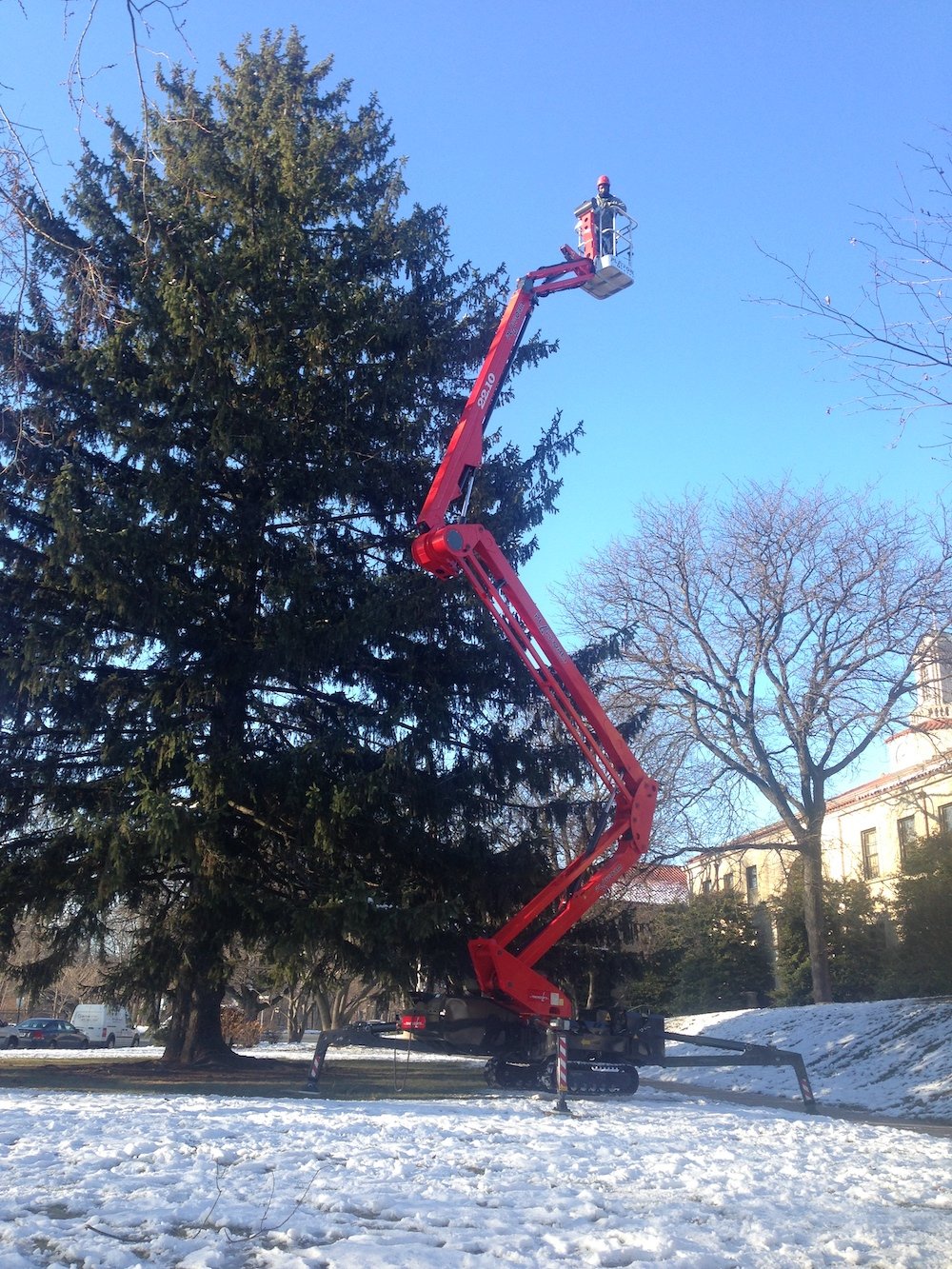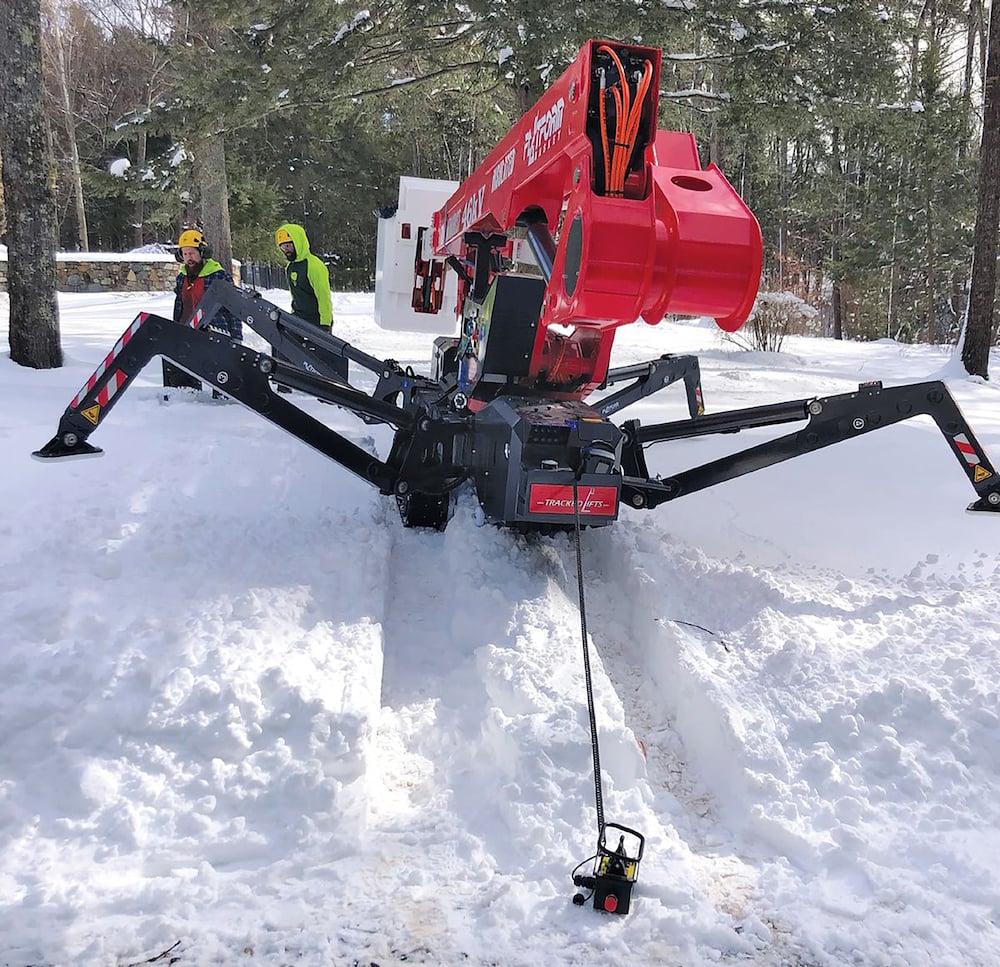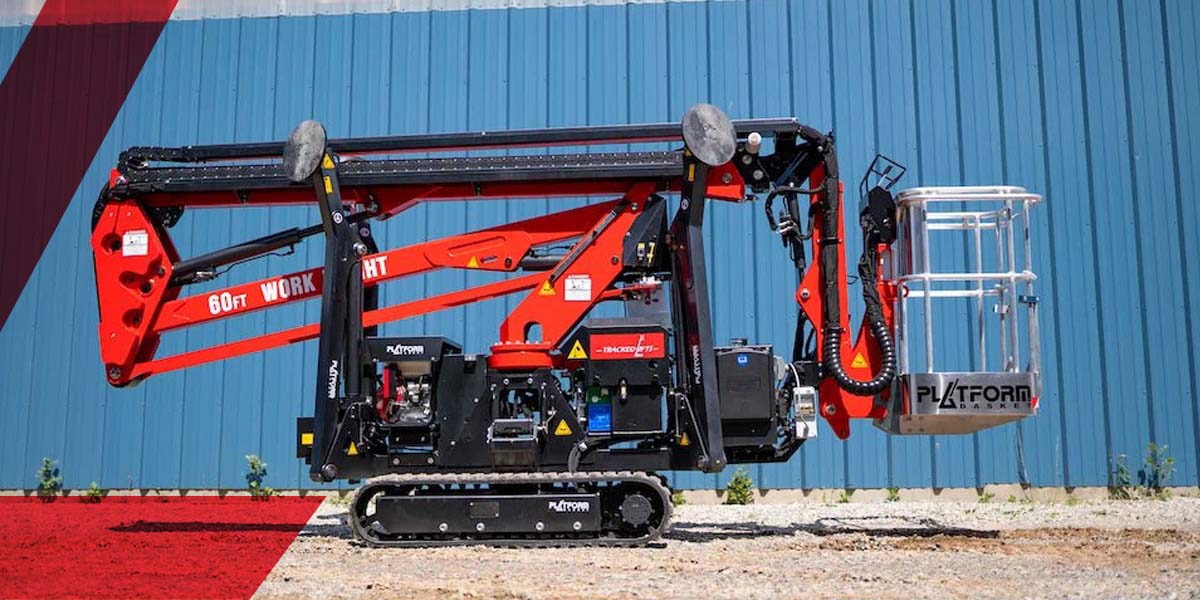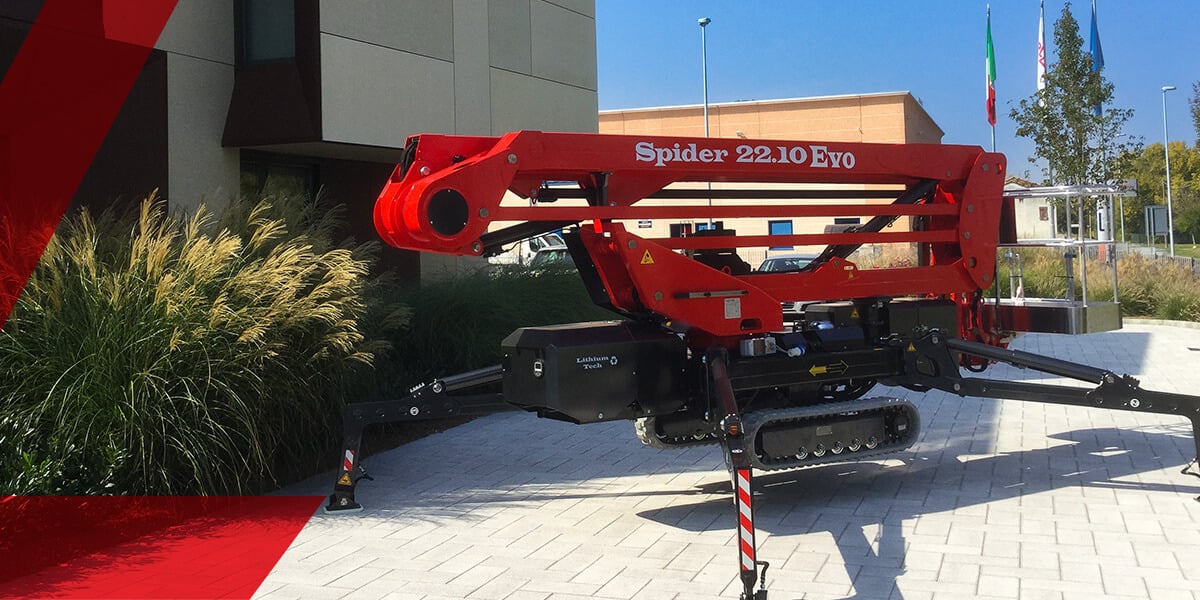In most parts of the United States, freezing temperatures are upon us. That being said, it’s important to provide special care for your Tracked Lift to ensure that it will continue working for you in these cold temps or give you an easy start-up come spring if your business takes a break during the winter months. There are three things that you should consider when thinking of winterizing your machine: winterization service, the stowing of your machine, and how to use your machine during the winter months. 
Winterization Service
The most important thing you can do to ensure the longevity of your Tracked Lift, not only in the winter months but year-round, is to maintain a regular maintenance schedule.
Some maintenance that should be done on a regular basis (pre-winter is no exception):
- Grease the machine at all recommended grease points. If you are not familiar with the grease points on your machine, refer to your owner’s manual.
- Change the engine oil and filter
- Change the fuel filter, air cleaner, and hydraulic filters
Note: Need parts for your Tracked Lift? We have all the previously mentioned parts and an additional large inventory at our headquarters in PA. To order parts, click here.
Before winter makes its full debut, make sure to:
- Drain the radiator and change the anti-freeze
- Do a point-to-point inspection of all operating parts. If winter is a slower season for your business, this is a good time to catch up on any maintenance or repairs you may have been dodging during the busy season.
Note: Tracked Lifts offers all of these services and more to our customers. To schedule standard maintenance of your machine, get in touch.
Another thing that is important to do all year round, but especially before the extremely cold months is to give your machine a good deep cleaning. This is especially important if you plan on storing your Tracked Lift for an extended period of time.
Some things to think about when cleaning your machine:
- When a Tracked Lift is actively used, particularly in arbor work, leaves, twigs, and sawdust tend to build up on the machine. Build-up of this kind is notorious for creating friction on hoses and wires and if left unattended, can cause damage. To prevent build-up of this nature, use compressed air to blow off your machine at the end of each day. If you plan on storing your machine, make sure you blow out all of the nooks and crannies first.
- When doing a deep clean, pull off the body panels and make sure any debris that may have slipped through the cracks is cleaned out. You don’t want sap, sawdust, or twigs freezing onto the internal components of your Tracked Lift.
- You can use a powerwasher on the external components of the machine, but you don’t want to use high-pressure water on the electrical boxes or control panels. Normally a garden hose and auto soap will do the trick. Keep in mind that the paint on your Tracked Lift is like that of an automobile, so take that into consideration when using any type of power washer. It is a wise idea to wash your machine either before temps hit freezing, or in a heated environment so that ice does accumulate.
Storing Your Machine
If you plan to store your Tracked Lift for an extended period of time, there are some things to consider.
The lift should be stored under cover and on dry ground in the winter, when possible:
- The ideal scenario for storing a lift in cold weather is in a heated garage. If you do not have cover available, you should tarp the machine (including the tracks) to prevent snow and ice build-up.
- When storing a machine for any extended period of time, we recommend starting the engine at least every other week and moving the lift from time to time to prevent dry rot in the rubber tracks (this is particularly important if your lift is not stored on a dry concrete pad).
- Animal proof the boom sections. During the colder months, animals love to get into dormant machines parked outside (or even garages with mice). Frequently check the openings of your machine to make sure no critters have made themselves at home. To prevent them from getting in in the first place, get some high-density foam from the craft shop and put them in any boom openings that are large enough for a mouse to get into. Even when a machine is tarped this precaution should be taken. Don’t forget to take the foam out before the next use!
One of the most important things to consider when storing during the winter months is the health of your Tracked Lift’s battery:
- If your lift has a lead-acid battery, ensure that it has an adequate electrolyte and water combination.
- On any type of battery, it is a good idea to check your battery to ensure that all cables are clean, there is no corrosion present, and the wires have a tight connection.
- If you don’t plan to run your lift for more than a month and you are not able to store it in a heated environment, we recommend pulling the battery out and keeping it indoors. Another option is to use a battery heater, which is a sock that goes around each battery to keep them from freezing. You can also use a trickle charger to ensure you don’t come back to a dead battery when it’s time to fire up your machine again.
- If you do decide to leave your battery in the machine, make sure you at least defrost your machine before the next use.
Using Your Machine in the Winter
As we know, there are many businesses that operate business as usual, even during the coldest of months. There are added layers of safety precautions that must be exercised in extreme temperatures for both the health of the machine and the operators.
Here are some things to consider for the health of your machine when using your Tracked Lift in the winter:
- Use a magnetic block heater that sticks to the side of the hydraulic and engine oil pan and heats the oil. This will help compensate for extreme cold so your machine doesn't work so hard to maintain its working temperature. These can be found at most farming/heavy equipment stores.
- Add an anti-gel diesel fuel additive to your machine every time you fill the engine. It is also a smart idea to include this additive in any storage tanks you might use, as well.
Considerations when operating your Tracked Lift in cold, snowy, and icy conditions:
- One of the things that go without saying, is that you have to be much more aware and cautious when snow or ice comes into play at a job site. Be very aware of your surroundings and amplify all standard safety procedures.
- Take extreme caution when a job site is riddled with snow, and even more so when you encounter ice. Never deploy outriggers directly onto ice, even with the use of outrigger pads. In a scenario where the terrain is covered in snow or ice, use a shovel to dig down to more stable terrain. Salt, sand, and ice melt are all tools that can be used to increase traction and create a more stable surface for deployment.
- In snowy and icy conditions, slopes should be avoided when possible, as they increase the potential to slip.
- If you get to a job site and you feel any type of uncertainty about whether or not it seems safe to set up, reschedule for another day. The safety of your crew is far more important than anything else.
Whether winter means business as usual or a much-needed respite, there are many things to consider to maintain the longevity of the health of your Tracked Lift. From storage to batteries, to winter work, all elements must be considered.




